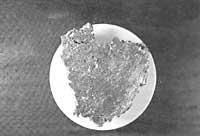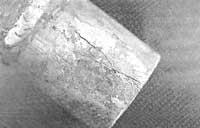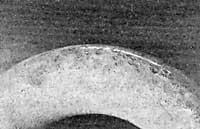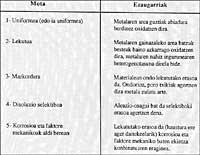Corrosion

What is corrosion?
Most metals are in the form of rust and sulfur in nature and the only way to get them is by extracting energy. Therefore, these metals are in a precarious situation and when they come into contact with the environment they tend to return to their natural state. This trend is the cause of corrosion.
Iron, for example, is an unstable element that, when faced, forms hydrated iron oxides depending on the reaction:
2Fe + O 2 + 2H 2 O = 2FeO H 2 O
These oxides are the so-called corrosion products.
Steel, due to its high percentage of iron, suffers the same oxidation process.

In some alloys, corrosion products are firmly attached to the alloy surface and subsequently offer protection against possible oxidations. This is the case of stainless steels. However, the membrane of corrosive products is not closely linked to the base metal. It has irregularities and does not protect against environmental aggression.
In England it is said that every 90 seconds a ton of steel is lost due to corrosion, which in Spain accounts for approximately 3% of GNP. To this should be added the expenses generated by the stops. Also the costs of replacement of new parts, problems of sizing in designs, etc.
Therefore, the importance of this issue and its consequent economic concern is not questionable.
Corrosion process
The corrosion reaction is usually studied as an electrochemical reaction, considering that all substances have different electrochemical potentials, although according to their molecular structure, more positive or more negative values are used. Metal alloys, being not pure substances, form small anodes and cathodes forming small batteries. The liquid medium will favor the transfer of electrons. Performs the electrolyte function by oxidizing the anode and reducing the cathode.

In order to check this reaction, three points must be taken into account:
- Structural aspects of metal Nature of the medium
- Interfacial reactions of metal
A brief analysis of them will follow.
- Metal Composition, alloy elements and possible microscopic and macroscopic heterogeneities are the factors to consider. And the presence of tensions. Medium We will analyze its chemical nature (liquid or gaseous). Oxidizing molecules, impurities, pressure, speed, etc. to see whether there is or not.
- Metal interface Oxidative kinetics of metal, nature of corrosive products, etc. are the aspects to be analyzed.
At first, the corrosion reaction can be expressed as the next simple reaction.
aA + bB = cC + dD
A would be a metal, zone B and corrosion products C and D. It should be clarified that the components of the medium that influence the process are only some.
Types of corrosion
Logically, corrosion could be "dry" or "wet." Dry, when aqueous solution did not participate in process and wet, in reverse cases. Today, due to the complexity of the subject, a wider classification is made, taking into account the different aspects that form corrosion.






